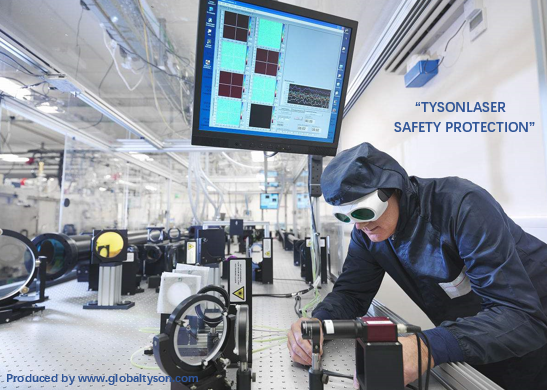In the U.S., a division of the Food and Drug Administration known as the Center for Devices and Radiological Health (CDRH) regulates the manufacturing and classification of U.S. radiation-emitting devices. Because laser light is a form of radiation, CDRH works to ensure that manufacturers of laser products follow specific guidelines designed to protect consumers. We at Tyson Laser Technology, Inc. have an obligation to the government, to ourselves, and most importantly, to our customers to make certain that our products adhere to the regulations set forth by CDRH. We can supply the laser module, red laser module etc. If our customers have any questions concerning laser safety they are encouraged to contact our on-staff Laser Safety Officer.
The Code of Federal Regulations (CFR) is the set of government guidelines established by CDRH that manufacturers of various products must adhere to. Specifically, guidelines 21 CFR 1040.10 and 1040.11 detail the standards that all laser products must meet. To comply with federal regulations, all laser system manufacturers must ensure that their products contain mandated safety features, must register their products with CDRH, and must properly label each device with its respective warning data. CDRH classifies lasers based on exposure times, wavelength, and power. Below is the laser safety class at industry.
Class 1
A Class 1 laser is safe under all conditions of normal use. This means the maximum permissible exposure (MPE) cannot be exceeded when viewing a laser with the naked eye or with the aid of typical magnifying optics (e.g. telescope or microscope). It is important to realize that certain lasers classified as Class 1 may still pose a hazard when viewed with a telescope or microscope of sufficiently large aperture.
Class 1M
A Class 1M laser is safe for all conditions of use except when passed through magnifying optics such as microscopes and telescopes. Class 1M lasers produce large-diameter beams, or beams that are divergent. The MPE for a Class 1M laser cannot normally be exceeded unless focusing or imaging optics are used to narrow the beam. If the beam is refocused, the hazard of Class 1M lasers may be increased and the product class may be changed.
Class 2
A Class 2 laser is considered to be safe because the blink reflex will limit the exposure to no more than 0.25 seconds. It only applies to visible-light lasers (400–700 nm). Class 2 lasers are limited to 1 mW continuous wave, or more if the emission time is less than 0.25 seconds or if the light is not spatially coherent.
Class 2M
A Class 2M laser is safe because of the blink reflex if not viewed through optical instruments. As with class 1M, this applies to laser beams with a large diameter or large divergence, for which the amount of light passing through the pupil cannot exceed the limits for class 2.
Class 3R
A Class 3R laser is considered safe if handled carefully, with restricted beam viewing. With a class 3R laser, the MPE can be exceeded, but with a low risk of injury. Visible continuous lasers in Class 3R are limited to 5 mW. For other wavelengths and for pulsed lasers, other limits apply.
Class 3B
A Class 3B laser is hazardous if the eye is exposed directly, but diffuse reflections such as those from paper or other matte surfaces are not harmful. The AEL for continuous lasers in the wavelength range from 315 nm to far infrared is 0.5 W. For pulsed lasers between 400 and 700 nm, the limit is 30 mJ. Protective eyewear is typically required where direct viewing of a class 3B laser beam may occur. Class-3B lasers must be equipped with a key switch and a safety interlock.
Class 4
Class 4 is the highest and most dangerous class of laser, including all lasers that exceed the Class 3B AEL. By definition, a class 4 laser can burn the skin, or cause devastating and permanent eye damage as a result of direct, diffuse or indirect beam viewing. These lasers may ignite combustible materials, and thus may represent a fire risk. These hazards may also apply to indirect or non-specular reflections of the beam, even from apparently matte surfaces. Class 4 lasers must be equipped with a key switch and a safety interlock. Most industrial, scientific, military, and medical lasers are in this category.
We are a professional manufacturer of laser products, if you need ir laser illuminator, red line laser module etc. Welcome to contact us.
